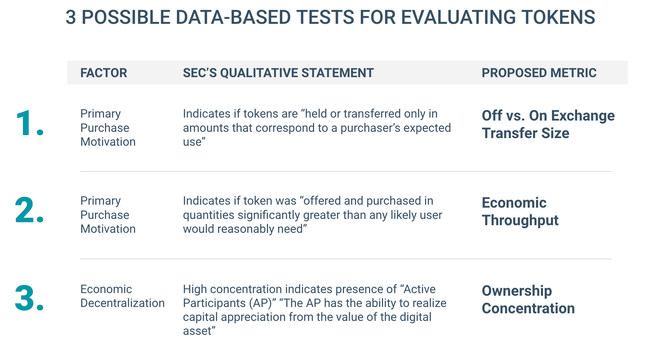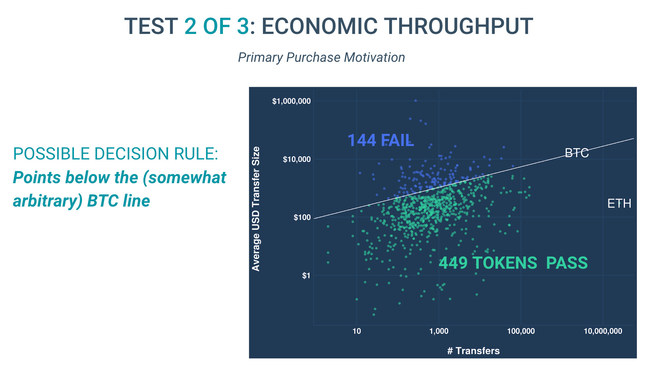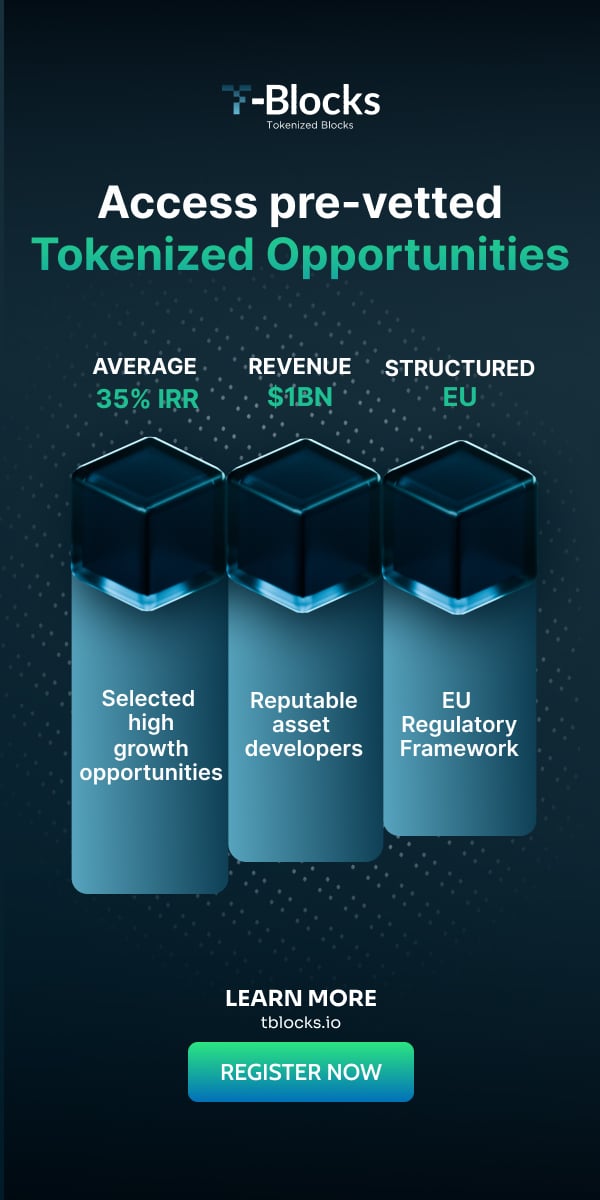Flipside Crypto and Blockchain Association Explore a Bright-Line Data Model for Evaluating When Cryptocurrency Transactions are Securities
The Blockchain Association and Flipside Crypto have partnered to explore the development of a bright-line data model for evaluating when token transactions are securities. On May 8 they co-released a report titled, “The SEC’s Token Guidance: Not Quantitative Enough; Presenting a possible bright-lines data model for evaluating when token transactions are securities,” and delivered the result demonstrating that a bright-line model can be constructed.


The bright-lines model was generated from Flipside Crypto’s blockchain data including its proprietary address categorization framework, which labels addresses based on speculation vs. true utility transactions. Utilizing the Blockchain Association’s knowledge of the regulatory landscape, they identified 3 quantitative tests for evaluating when a token is a security. The tests include:
1. Off vs. On Exchange Transfer Size
Indicates if tokens are “held or transferred only in amounts that correspond to a purchaser’s expected use”
2. Economic Throughput
Indicates if token was “offered and purchased in quantities significantly greater than any likely user would reasonably need”
3. Ownership Concentration
High concentration indicates presence of “Active Participants (AP) who have the ability to realize capital appreciation from the value of the digital asset”
“Crypto projects, investors and service organizations have been seeking ways to address a critical regulatory question: when are token transactions classified as securities?’,” said Kristin Smith, Director of External Affairs with the Blockchain Association. “We want to find a pathway towards clarity so that we have the regulatory certainty needed for the industry to thrive. We look forward to building upon this framework with stakeholders, regulators and others interested in ensuring proper regulation for the industry.”
The bright-lines framework reflects on the SEC’s most recent public guidance, presented June of 2018 and April of 2019, which is difficult to evaluate because it articulates mainly qualitative factors and doesn’t provide a weighting methodology for quantitative factors.
The recommended bright-lines approach proves it is possible to use data to quantitatively evaluate tokens in an objective manner; it was applied to Ethereum, Bitcoin and 593 Cryptocurrencies. The results would suggest that 34 projects would fail all 3 tests and 154 projects would pass all 3 tests.
“Due to the transparent nature of crypto networks, it is possible to evaluate cryptocurrencies in an objective manner to understand where the security lines should be drawn,” noted Angela Minster, Senior Data Scientist at Flipside Crypto. “While previous SEC guidance has been difficult to quantitatively evaluate, there is a future where clarity is possible which would enable the cryptocurrency industry take big leaps forward.”
The report, “The SEC’s Token Guidance: Not Quantitative Enough: Presenting a possible bright-lines data model for evaluating when token transactions are securities,” can be requested from flipsidecrypto.com and theblockchainassocation.org.
More Articles:
ZenSports Announces Dividend Payout on Its Cryptocurrency Security Token SPORT
Japan probes two cryptocurrency exchanges after management changes: sources
You Might also Like





















